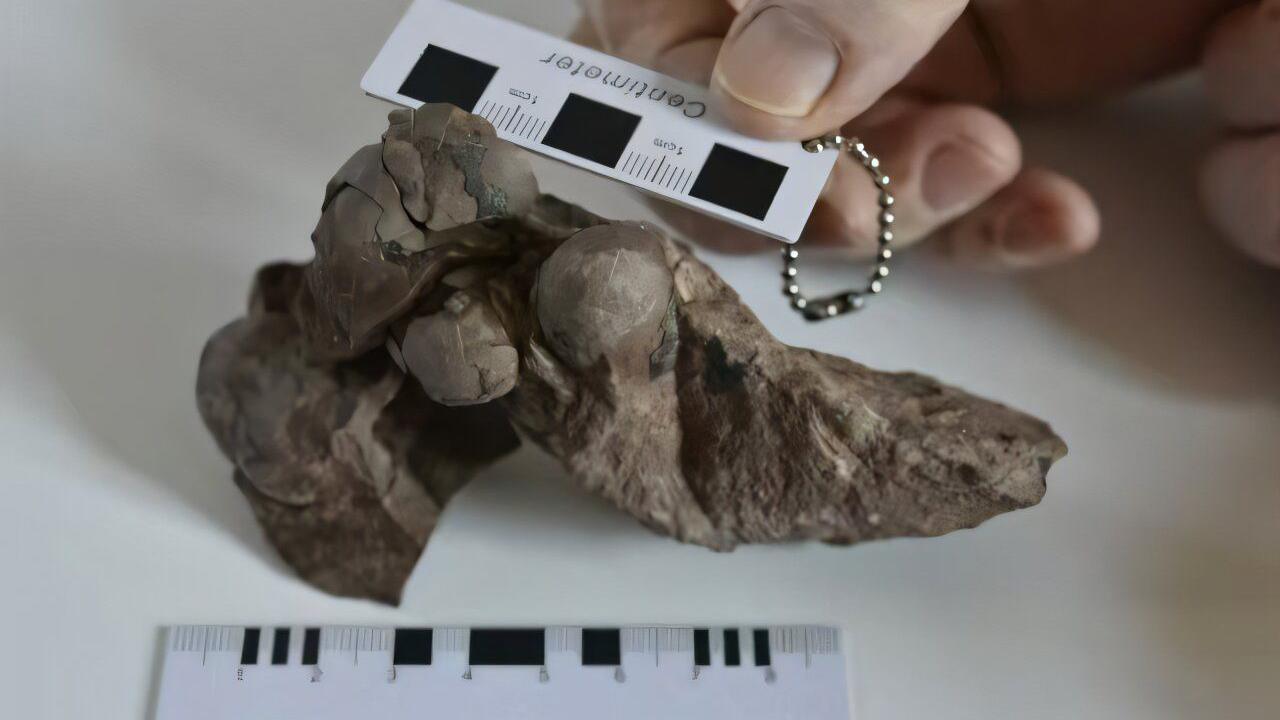These are the smallest dinosaur eggs ever discovered

The tiny dinosaur eggs were discovered in 2021.
- Published
Some dinosaurs may have been the largest creatures to ever walk the Earth.
But these tiny fossils, which were discovered in China, are officially the smallest dinosaur eggs ever found.
A team of palaeontologists from the University of Geosciences have been studying the small collection of eggs since they were unearthed in 2021 and have now published their findings.
They believe the small pebble-shaped eggs were from a relative of a Tyrannosaurus rex.
Is this the smallest dinosaur that ever lived?
- Published17 March 2020
Isle of Wight dino is 'most complete' in more than 100 years
- Published10 July 2024
First dinosaur named 200 years ago - what have we learned?
- Published14 February 2024
How did they study the tiny eggs?

Experts say the eggs belongs to a type of therapod - two-legged dinos which include dinos like T.rex and this Deinonychus.
The team found the group of six almost fully-intact eggs near the city of Ganzhou in South-East China.
It is a popular area for palaeontologists to study as there have been many discoveries of dinosaur eggs there over the years.
Writing about their research in the Historical Biology journal, the team gathered information on the eggs by scanning them with an electron microscope.
These powerful bits of kit are able to see the make-up of discoveries like this in exceptional detail using electrons as the illumination source.
By using these cutting edge imaging techniques, they were able to date the eggs to around 80 million years ago.

The tiny dino eggs are the size of a grape
They believe the small pebble-shaped eggs were from a previously unknown species of non-avian (not bird-like or able to fly) therapod.
Previously, the smallest dinosaur egg found was 45.5mm by 40.4mm.
This new discovery was just 29mm in length - around the size of a grape!
And the team have managed to carry out their research without having to destroy any of the eggs - they are all in the same condition they were found in.
They plan to continue studying the tiny eggs and are hoping to figure out which sort of dinosaur laid them.
